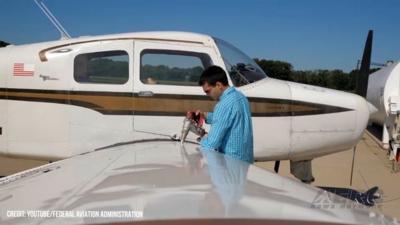Getting the Lead Out
In February 2022, a cooperative comprising the FAA and aviation and petroleum industry stakeholders established the EAGLE (Eliminate Aviation Gasoline Lead Emissions) program. The initiative set out to safely but surely eradicate the production and use of leaded aviation fuel by the end of 2030.

The passage into law of the $1.7-trillion Consolidated Appropriations Act of 2023 allocated $10-million to the continued development of unleaded aviation fuels.
The funds will support the EAGLE partnership and may be used to expedite the maturation of unleaded fuels currently being tested and evaluated under the auspices of the FAA’s Piston Aviation Fuels Initiative (PAFI) program.
At present, the aforementioned PAFI program is assessing two candidate unleaded 100-octane fuels developed respectively by Afton Chemical/Phillips 66 and LyondellBasell/VP Racing. Both fuels have shown progress and promise.
Federal monies deriving of the Consolidated Appropriations Act may also fund field demonstration programs for fuels having received FAA Type Certification (TC) or Supplemental Type Certification (STC)—such as General Aviation Modifications, Inc’s. G100UL fuel, which received usage authorization via FAA Supplemental Type Certificate in September 2022, and Swift Fuels’ 100R higher octane unleaded fuel, the FAA Supplemental Type Certification of which is expected to be granted in 2023.
The general aviation industry and the FAA are committed to working together under the EAGLE program to ensure that the inevitable transition to unleaded reciprocating-engine aviation fuels is carried out circumspectly.
Developed in the 1940s to burn predictably in the era’s highly-supercharged aero-engines—notably, Rolls-Royce’s legendary V-12 Merlin—conventional leaded aviation fuels the likes of 100LL have safely and reliably powered innumerable general aviation aircraft for eighty-years.
The push to eliminate leaded aviation fuels began with the 2010 publication of a U.S. Environmental Protection Agency (EPA) Notice of Proposed Rulemaking (NPRM) opposing the use of leaded fuel in piston engines.

On 07 October 2022, the EPA set forth a proposed determination that lead emissions from aircraft cause or contribute to pollution which may reasonably be anticipated to endanger public health and welfare under section 231(a) of the Clean Air Act. Since termed the “endangerment finding,” the action is widely looked upon as a first step toward the application of the EPA’s and the Federal Aviation Administration (FAA)’s statutory authorities to address aircraft lead emissions.
Should the EPA conjure the bureaucratic black magic necessary to transform its proposed determination—a.k.a. “endangerment finding”—into a final determination that aircraft lead emissions endanger public health and welfare, the agency would subsequently propose regulatory standards for aero-engine lead emissions. Such a final determination would also trigger the FAA’s statutory mandate to prescribe standards for the composition and chemical and physical properties of an aircraft fuel (or fuel additive) by which to control or eliminate aircraft lead emissions.
On 17 October 2022, the EPA published its proposal to codify the elimination of leaded aviation fuels in the U.S. Federal Register. Public comments germane to subject proposal will accepted until 17 January 2023 at: www.regulations.gov/search?filter=EPA-HQ-OAR-2022-0389&sortBy=commentEndDate&sortDirection=desc
 ANN's Daily Aero-Term (05.02.24): Touchdown Zone Lighting
ANN's Daily Aero-Term (05.02.24): Touchdown Zone Lighting Aero-News: Quote of the Day (05.02.24)
Aero-News: Quote of the Day (05.02.24) Aero-News: Quote of the Day (05.03.24)
Aero-News: Quote of the Day (05.03.24) ANN's Daily Aero-Term (05.03.24): UAS Traffic Management (UTM)
ANN's Daily Aero-Term (05.03.24): UAS Traffic Management (UTM) ANN's Daily Aero-Linx (05.03.24)
ANN's Daily Aero-Linx (05.03.24)




